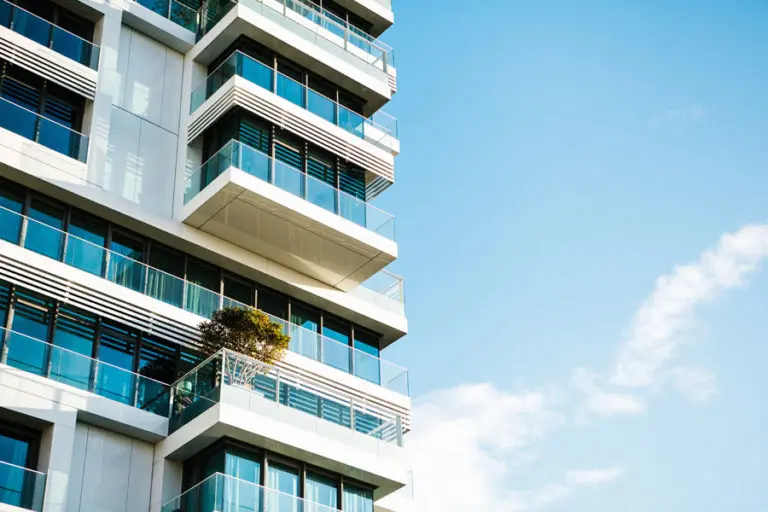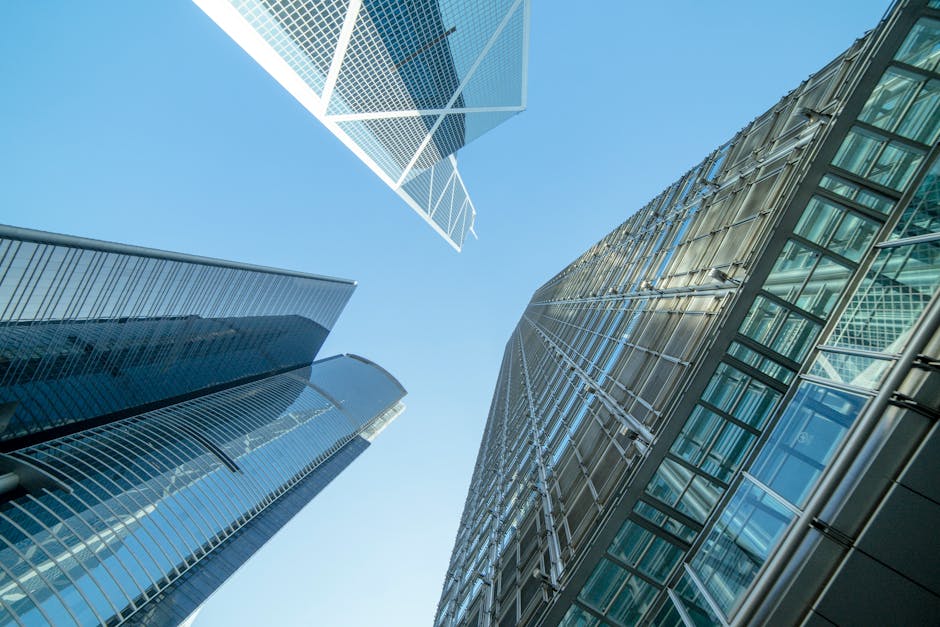Commercial Property Insurance Costs: A Detailed Breakdown

Understanding the Costs of Commercial Property Insurance
How much does commercial property insurance cost? On average, commercial property insurance has a median cost of $67 per month or about $800 a year. However, these figures can vary significantly based on factors like location, industry, and coverage needs.
When it comes to protecting your business’ physical assets—from your building to your vital records—commercial property insurance is an essential investment. A single unfortunate event, such as a fire or a severe storm, can devastate your operations. It’s crucial to be aware of the costs and factors that influence them to make informed decisions.
Commercial Property Insurance Costs Breakdown:
– Median Monthly Cost: $67
– Average Annual Cost: $800
At Schneider and Associates Insurance Agencies, we understand the unique challenges faced by Florida’s homeowners and small business owners. Our goal is to provide personalized and comprehensive insurance solutions that fit your specific needs, offering robust coverage that steers regional risks and gives you peace of mind.
I’m Paul Schneider, with experience in the insurance industry, specializing in coverage for small businesses. My aim is to help you understand how much does commercial property insurance cost and guide you through the best options to safeguard your business assets effectively. Stay tuned as we dig deeper into the specifics of commercial property insurance and its associated costs to help you make the best decision for your business.
Important how much does commercial property insurance cost terms:
– commercial property and casualty insurance
– business liability insurance
– what is commercial property insurance
What is Commercial Property Insurance?
Commercial property insurance is essential for protecting your business’s physical assets. This type of insurance covers your building, equipment, inventory, and other property from various risks. Let’s explore the different types of policies and what they cover.
Basic Form Coverage
A Basic Form policy is the most straightforward type of commercial property insurance. It covers:
Fires: Protects against damage caused by fires, which can be devastating to any business.Vandalism: Covers the costs of repairs if your property is vandalized.Theft: Ensures that stolen property is replaced or reimbursed.Common Natural Disasters: Includes events like wind, hail, lightning strikes, and wildfires.
However, there could be exclusions based on your business’s risk profile. Always read the fine print to understand what’s covered.
Broad Form Coverage
A Broad Form policy includes everything covered by the Basic Form, plus additional protections:
Water Damage: Covers damage from certain types of water-related incidents, though not typically flooding.Collapsing Structures: Protects against the collapse of buildings due to covered perils.Falling Objects: Covers damage from objects that fall onto your property.Weight of Snow or Ice: Includes coverage for structural damage caused by the weight of accumulated snow or ice.
This type of policy offers more comprehensive protection, making it suitable for businesses with higher risk exposures.
Special Form Coverage
A Special Form policy is the most extensive coverage type. It protects your property from all perils unless specifically excluded. This means:
All-Risk Protection: Covers all types of damage except those explicitly mentioned in the policy exclusions.Exclusions: Common exclusions might include wear and tear, fraud, and certain natural disasters like earthquakes or floods unless added separately.
Special Form policies provide the broadest protection, ensuring that your business is safeguarded against the widest range of potential hazards.

Understanding the different types of commercial property insurance policies can help you choose the best one for your business needs. Whether you opt for Basic, Broad, or Special Form coverage, it’s crucial to know what’s included and what’s not to ensure comprehensive protection.
Next, we’ll dive into the factors that affect the cost of commercial property insurance. Stay tuned to learn more about how to manage your insurance expenses effectively.
How Much Does Commercial Property Insurance Cost?
When it comes to how much does commercial property insurance cost, several factors come into play. Let’s break it down.
Factors Affecting Cost
1. Location:
Where your business operates significantly impacts your insurance cost. For instance, a business in a high-crime area or a region prone to natural disasters like hurricanes or floods will face higher premiums. Proximity to fire stations and hydrants can also lower your costs.
2. Industry:
Your industry plays a big role. High-risk industries (like manufacturing or restaurants) will pay more than low-risk industries (like consulting or accounting). For example, a computer repair shop with lots of foot traffic will likely pay more than an IT consultant working from home.
3. Occupancy:
The number of people present daily, both employees and customers, affects your rates. More foot traffic means higher risk, leading to higher premiums.
4. Equipment:
The type and value of your equipment matter. Businesses with expensive or hazardous equipment will pay more. For instance, a factory with heavy machinery will have higher premiums compared to an office with just computers and furniture.
5. Construction:
The materials used in your building’s construction are crucial. Buildings made of non-combustible materials like brick or stone are cheaper to insure compared to those made of wood.
6. Building Age:
Older buildings generally cost more to insure due to potential structural issues and outdated systems. However, recent updates and renovations can reduce premiums.
7. Security Measures:
Having robust security and safety measures in place, such as fire alarms, sprinkler systems, and security cameras, can lower your premiums. These measures reduce the likelihood of claims, making your business less risky to insure.
Cost by Industry
Low-Risk Industries:
– Consulting Firms: With minimal equipment and lower foot traffic, these businesses generally pay lower premiums.
– Accountant Offices: Similar to consulting firms, they have fewer risks and lower insurance costs.
High-Risk Industries:
– Manufacturing: High-value equipment and increased risk of accidents lead to higher premiums.
– Restaurants: Open flames and high foot traffic make these businesses more expensive to insure.
Cost by Location
Natural Disasters:
Businesses in areas prone to natural disasters like hurricanes, tornadoes, or earthquakes will face higher premiums. For example, a business in Florida might pay more due to hurricane risks.
Crime Rates:
High-crime areas will also see higher insurance costs. For instance, a retail store in a city with high theft rates will pay more than one in a low-crime suburb.
Proximity to Fire Stations:
Being close to a fire station and having easy access to fire hydrants can significantly reduce your premiums. Fire protection is a crucial factor for insurers.


Understanding these factors can help you better estimate your commercial property insurance costs and take steps to manage them effectively. Next, we’ll explore how to calculate commercial property insurance rates.
How to Calculate Commercial Property Insurance Rates
Calculating commercial property insurance rates involves several key factors. Let’s explore the details.
Replacement Value vs. Actual Cash Value
One of the first decisions you’ll need to make is whether to insure your property for its replacement value or its actual cash value.
Replacement Value Coverage: This type of coverage pays to replace your property with new items of similar kind and quality, without deducting for depreciation. For example, if a fire destroys your office furniture, replacement value coverage will pay for new furniture of similar quality. While this option provides better protection, it comes with higher premiums.
Actual Cash Value Coverage: This type considers depreciation and reimburses you for the property’s current market value. If the same fire damages your furniture, actual cash value coverage will only pay what the furniture is worth today, which is likely less than what you initially paid. This option is cheaper but may leave you with significant out-of-pocket expenses.
Coverage Limits and Deductibles
1. Coverage Limits:
When purchasing commercial property insurance, you’ll choose a coverage limit, which is the maximum amount the insurer will pay for a claim. Higher coverage limits mean higher premiums, but they also provide more protection.
For instance, if your policy has a $500,000 limit and a fire causes $600,000 in damage, you’ll be $100,000 short. It’s crucial to assess your property and assets accurately to set appropriate limits.
2. Deductibles:
The deductible is the amount you must pay out-of-pocket before the insurance kicks in. Higher deductibles can lower your premiums, but they also mean you’ll pay more upfront in the event of a claim.
For example, a policy with a $1,000 deductible will have lower premiums than one with a $500 deductible, but you’ll need to cover that first $1,000 in any claim.
Value of Building and Contents
The value of your building and its contents is a major factor in determining your insurance rates. Insurers will look at:
Building Value: The cost to rebuild your property from scratch.Contents Value: The cost to replace everything inside, from furniture to specialized equipment.
Accurately estimating these values ensures you have adequate coverage without overpaying.
Risk Level
Risk level is another critical component. Insurers assess various risks to determine your premiums:
Fire and Theft Protection: Proximity to fire stations and hydrants, presence of fire alarms, sprinklers, and security systems.Natural Disasters: Location in areas prone to floods, earthquakes, or hurricanes.Building Construction: Materials used in construction (e.g., brick vs. wood).Building Age: Older buildings may have outdated systems that increase risk.
Reducing your risk through safety measures and updates can help lower your premiums.
By understanding these elements, you can better estimate your commercial property insurance rates and make informed decisions about your coverage options. Next, we’ll share tips to lower your commercial property insurance costs.
Tips to Lower Commercial Property Insurance Costs
Reducing your commercial property insurance costs can be easier than you think. Here are some practical tips to help you save money on your premiums.
Reduce Your Risk
Implement Fire-Retardant Systems:
One of the most effective ways to lower your insurance premiums is by installing fire-retardant systems. Sprinkler systems, fire alarms, and fire extinguishers can significantly reduce the risk of fire damage.
“Installing a sprinkler system can lower your insurance premiums by up to 10%,” says industry expert Gary Sullivan.
Improve Security Systems:
Security measures like video surveillance, commercial-grade locks, and burglar alarms can deter theft and vandalism. These systems not only protect your assets but also make you eligible for discounts.
Perform Regular Safety Checks:
Routine safety inspections can catch potential hazards before they become costly claims. Regular checks of electrical systems, plumbing, and structural integrity can go a long way in reducing risks.
Learn from Previous Claims
Analyze Claims:
Review your past insurance claims to identify patterns and areas for improvement. If you’ve had multiple claims for the same issue, like water damage, take steps to address the root cause.
Implement Preventive Measures:
Once you’ve identified risk areas, put preventive measures in place. For instance, if water damage is a recurring problem, consider upgrading your plumbing or installing water leak detectors.
Choose the Right Deductible
Flat-Rate Deductibles:
A flat-rate deductible is a set amount you pay out-of-pocket for each claim. Choosing a higher flat-rate deductible can lower your monthly premiums.
Percentage Deductibles:
Percentage deductibles are based on a percentage of your property’s insured value. This type can be beneficial if your property value is relatively low, but it can be costly if you have a high-value property.
Per Occurrence Deductibles:
This type of deductible applies to each individual claim. While it might be higher than other deductibles, it can be more manageable if you don’t file claims often.
Bundle Policies
Business Owner’s Policy (BOP):
Bundling multiple types of insurance, like general liability and commercial property insurance, into a Business Owner’s Policy (BOP) can save you up to 10% on premiums.
General Liability Insurance:
Adding general liability insurance to your policy provides broader coverage and can often be bundled at a discounted rate.
“Most small businesses choose a $1 million / $2 million business owner’s policy,” according to data from TechInsurance.
By taking these steps, you can reduce your commercial property insurance costs while still maintaining comprehensive coverage. Next, we’ll answer some frequently asked questions about commercial property insurance costs.
Frequently Asked Questions about Commercial Property Insurance Costs
How much is a $2 million dollar insurance policy for a business?
The cost of a $2 million commercial property insurance policy can vary widely. Factors like your business’s industry, location, and claims history all play a role. As a general rule, businesses with higher risk profiles—like construction companies—will pay more than lower-risk businesses like florists.
Example: A small construction company might pay around $6,000 annually for a $2 million policy, while a retail store might pay closer to $3,000.
Why is commercial property insurance so expensive?
Commercial property insurance can be costly due to several reasons:
Location: If your business is in an area prone to natural disasters like earthquakes or floods, expect higher premiums. For instance, businesses in downtown Los Angeles will pay more than those in rural Pennsylvania.
Industry Risk: High-risk industries, such as manufacturing or construction, face more daily risks and therefore have higher insurance costs.
Claims History: A history of frequent claims can bump up your premiums. For example, a bakery that had a major fire claim will likely see higher renewal rates.
Coverage Limits: Higher coverage limits mean higher premiums. Choosing a $2 million policy over a $1 million policy will naturally cost more.
How to calculate a commercial property insurance rate?
Calculating your commercial property insurance rate involves several steps:
Determine Replacement Value vs. Actual Cash Value:Replacement Cost Coverage: This covers the cost to replace your property with new items without depreciation. It’s more expensive but provides better coverage.
Actual Cash Value Coverage: This covers the depreciated value of your property. It’s cheaper but may not fully cover replacement costs.
Assess Coverage Limits and Deductibles:
Higher coverage limits provide more protection but increase your premium.
Higher deductibles can lower your monthly payments but mean more out-of-pocket costs if you file a claim.
Evaluate Risk Factors:
Location: Areas with high crime rates or frequent natural disasters will have higher premiums.Industry: High-risk industries will pay more for coverage.
Claims History: A clean claims history can lower your costs.
Use Online Tools:
Many insurance companies offer online calculators to estimate your premium. These tools consider factors like location, industry, and coverage limits.
By understanding these factors, you can get a clearer picture of what to expect in terms of commercial property insurance costs. For more detailed information, you can always get a quote from Schneider and Associates Insurance Agencies.
Conclusion
Commercial property insurance is essential for protecting your business from financial loss due to damaged or stolen assets. Understanding how much does commercial property insurance cost and the factors that influence these costs can help you make informed decisions.
Summary
The cost of commercial property insurance varies based on several factors, including your business location, industry, and claims history. For example, a business in a high-risk area like downtown Los Angeles will pay more than one in a rural setting. Similarly, industries with higher risk profiles, such as construction, will face higher premiums compared to low-risk industries like retail.
To get the best value, consider the type of coverage you need—whether it’s replacement cost or actual cash value—and evaluate your coverage limits and deductibles. Making your business safer with fire-retardant systems and security measures can also help reduce your premiums.
Schneider and Associates Insurance Agencies
At Schneider and Associates Insurance Agencies, we specialize in offering personalized insurance solutions custom to meet your specific needs. Whether you have a small retail store or a large manufacturing facility, we can help you find the right commercial property insurance coverage to protect your assets.
Our team understands the unique risks and requirements of different industries and locations. We offer custom coverage options that consider factors like your business’s location, type, and claims history. This ensures you get comprehensive protection without paying for unnecessary extras.
Ready to protect your business? Get a quote today and let Schneider and Associates Insurance Agencies take care of your commercial property insurance needs.
By taking these steps and working with a knowledgeable insurance provider like Schneider and Associates Insurance Agencies, you can ensure that your business is well-protected against unforeseen events.







